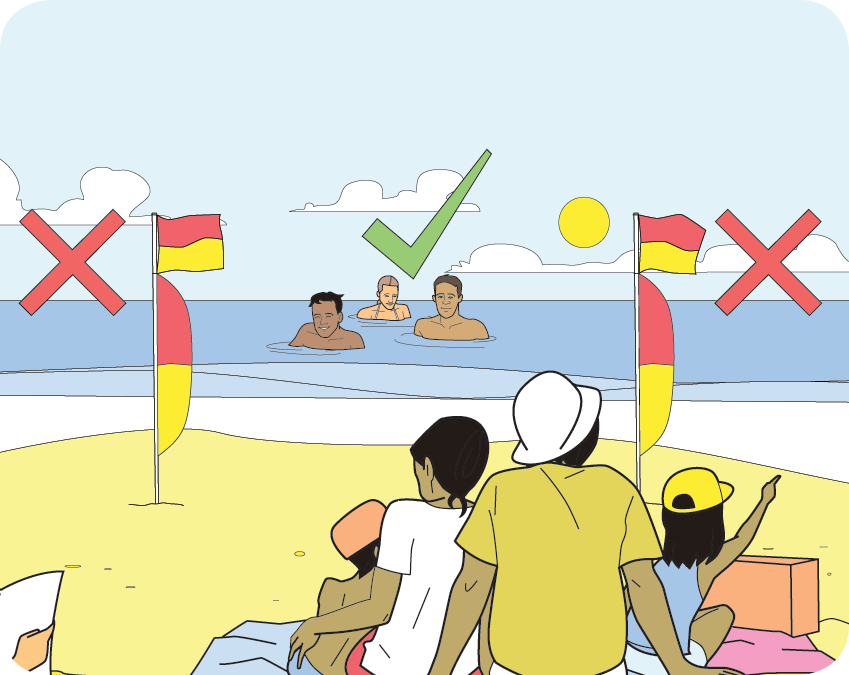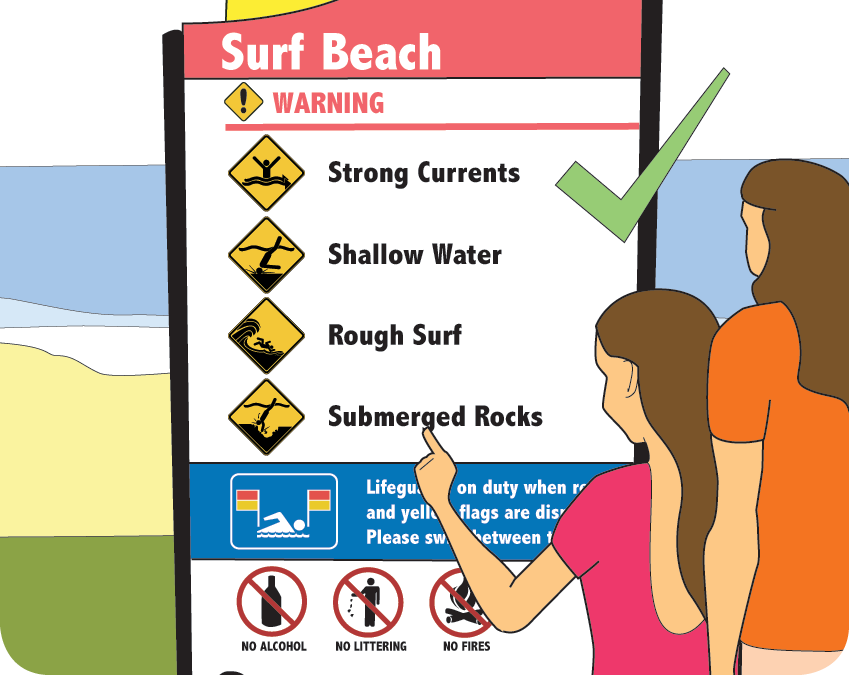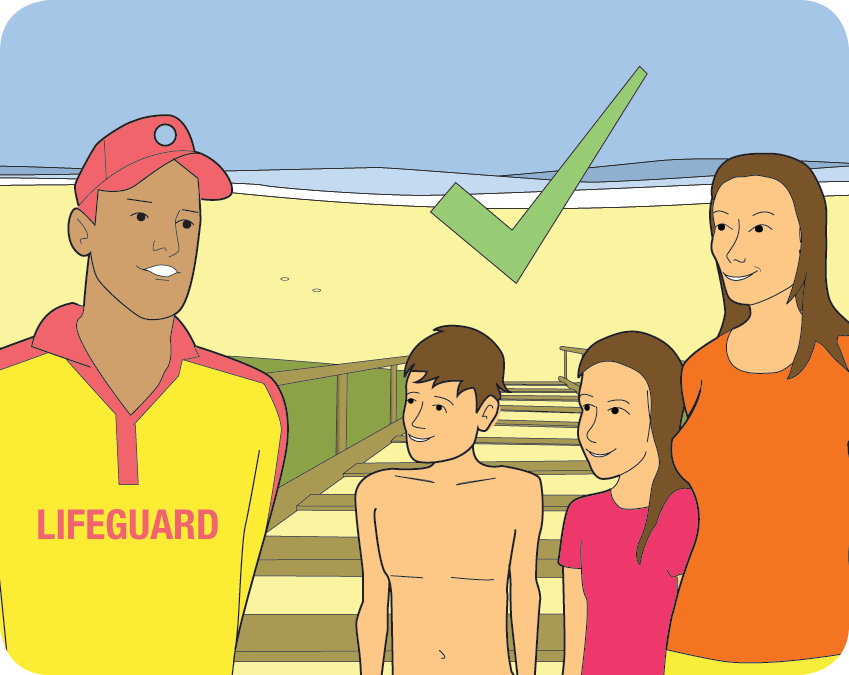When you see red and yellow flags on a beach, it indicates that there is currently a lifesaving service operating on that beach. The lifeguards have chosen a section of the beach that’s best for swimming and they’ll closely supervise this area.

Millions of people visit Australia’s beautiful beaches every year to enjoy the environment and participate in different activities. Although Australian beaches may look amazing, they can be unpredictable and dangerous to anyone.
Here you will find some very helpful advice from our Lifeguards on beach safety, to ensure you enjoy your visit to the beach and stay safe!
When you see red and yellow flags on a beach, it indicates that there is currently a lifesaving service operating on that beach. The lifeguards have chosen a section of the beach that’s best for swimming and they’ll closely supervise this area.

Before you go on to the beach be sure to read the safety signs. This will ensure you’re aware of any warnings or dangers on the beach. You can also find other helpful information to make your day at the beach more enjoyable. You might also find single signs placed on the beach to highlight specific warnings.

Lifeguards are highly trained and very knowledgeable about beach safety and conditions. When you arrive at the beach look for the lifeguards. Feel free to ask them about the day’s conditions, as well any additional beach safety advice they might have for that specific beach – because every beach is different.

Not only is swimming with a friend (or family member) a fun way to enjoy the beach, it is also very sensible. While you’re swimming together you can keep an eye out for each other, and if further assistance is required, one person could call or go for help. If everyone swimming together knows their own limits it’s a good idea to share this with those around you so you can all stay within everyone’s comfortable limits.

Even the most careful people can find themselves out of their limits in the water. If you are not feeling comfortable in the water and you require a lifeguard’s assistance to get back to shore, stay calm, raise your arm in the air and wave it from side to side. This will attract the attention of a lifeguard who will be able to come to your assistance. You should conserve your energy by floating on your back and staying calm. This will ensure you have the energy to remain afloat until further aid arrives
